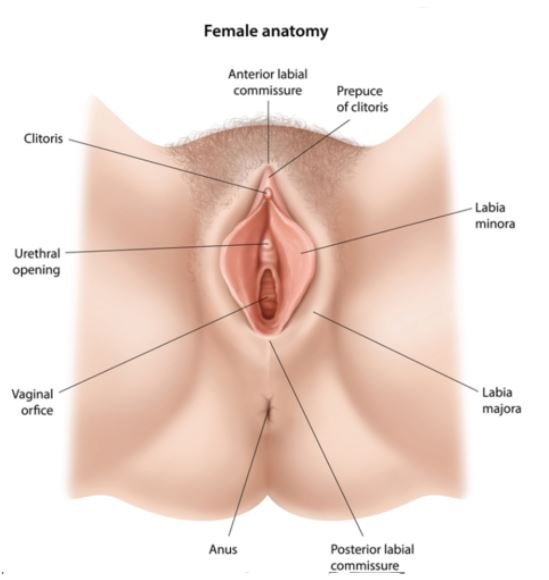Urine output would be expected as this client has not voided for 6 hours (obligatory amount is at least 30 mL x 6 = 180 mL). The most common explanation is that the catheter was unintentionally inserted into the vagina. The nurse should leave that catheter as a landmark and insert a new sterile catheter into the urethra which is located above the vagina.
(Option 2) There sometimes can be a brief (15 second) delay from the water-based lubricant partially blocking the opening before quickly "melting." 30 minutes is too long a delay without an additional intervention. There is no reason to wait that long.
(Option 3) There is no sign that there is an obstruction; the catheter was not adequately inserted.
(Option 4) A urinary catheter should never be reused as it is no longer sterile and may introduce bacteria in the urinary tract, a new one should always be obtained. By removing the first catheter, the nurse will be more likely to re-insert it into the same (wrong) opening.
Educational objective: If no urine is returned from Foley catheter insertion in a female client after a short time, the nurse has probably not inserted it into the correct opening. The nurse should leave the original catheter in place and reinsert a new sterile catheter above the original position.

Urine output would be expected as this client has not voided for 6 hours (obligatory amount is at least 30 mL x 6 = 180 mL). The most common explanation is that the catheter was unintentionally inserted into the vagina. The nurse should leave that catheter as a landmark and insert a new sterile catheter into the urethra which is located above the vagina.
(Option 2) There sometimes can be a brief (15 second) delay from the water-based lubricant partially blocking the opening before quickly "melting." 30 minutes is too long a delay without an additional intervention. There is no reason to wait that long.
(Option 3) There is no sign that there is an obstruction; the catheter was not adequately inserted.
(Option 4) A urinary catheter should never be reused as it is no longer sterile and may introduce bacteria in the urinary tract, a new one should always be obtained. By removing the first catheter, the nurse will be more likely to re-insert it into the same (wrong) opening.
Educational objective: If no urine is returned from Foley catheter insertion in a female client after a short time, the nurse has probably not inserted it into the correct opening. The nurse should leave the original catheter in place and reinsert a new sterile catheter above the original position.



![Boost Skills: NCLEX Daily Questions #12 [ays_quiz id="160"]](https://completenursingsolution.in/wp-content/uploads/2024/10/01-Nov.-NCLEX-Practice-Questions.png)
Can you be more specific about the content of your article? After reading it, I still have some doubts. Hope you can help me.
You can definitely see your skills in the work you write. The world hopes for even more passionate writers like you who are not afraid to say how they believe. Always go after your heart.
Rattling great information can be found on weblog. “Preach not to others what they should eat, but eat as becomes you, and be silent.” by Epictetus.